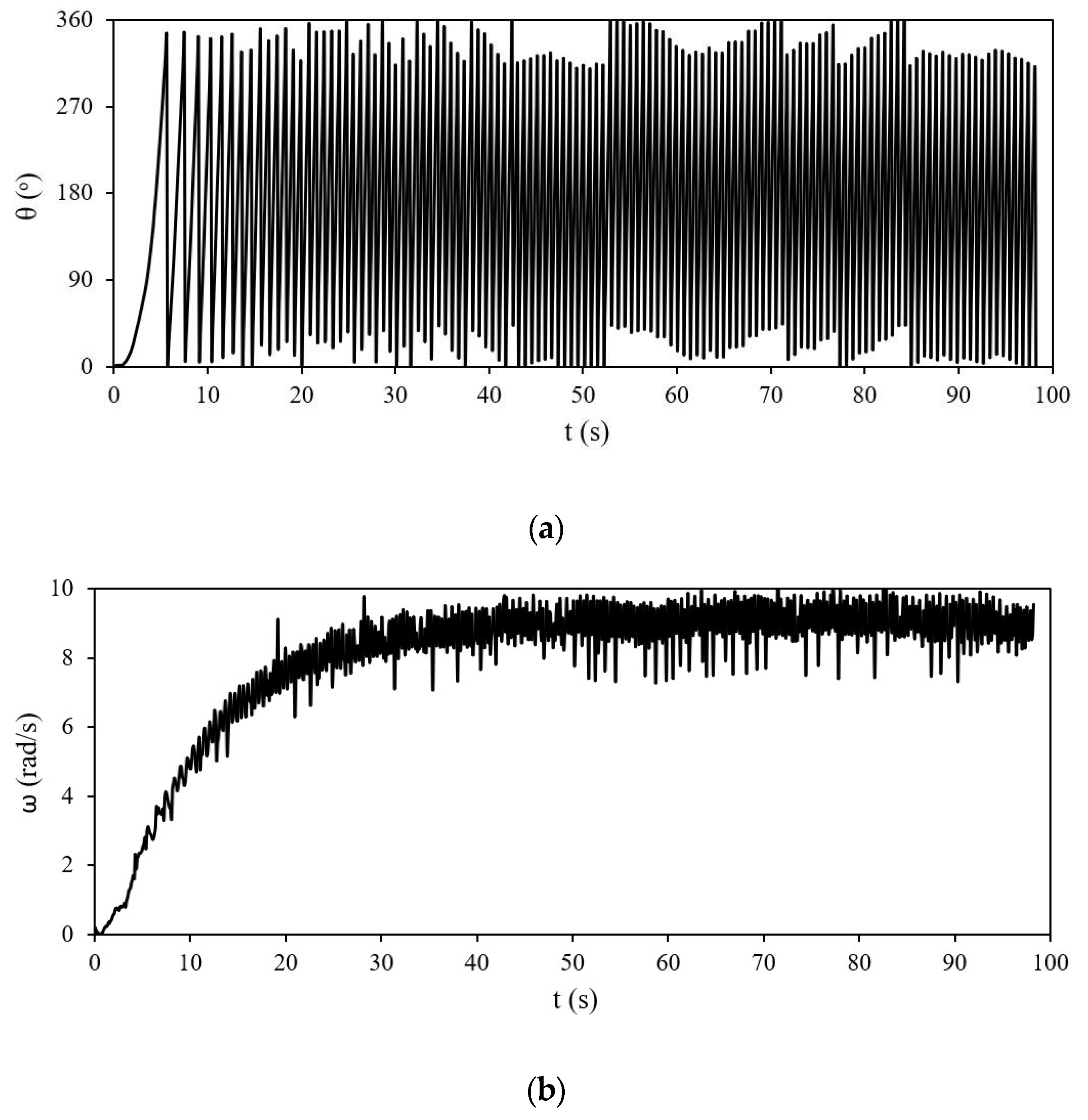Startup Dynamics of Drag-Based Multibladed Vertical Axis Wind Turbine †
Abstract
:1. Introduction
2. Materials and Methods
3. Results
4. Conclusions
Author Contributions
Funding
Institutional Review Board Statement
Informed Consent Statement
Data Availability Statement
Conflicts of Interest
References
- Mu, Z.; Tong, G.; Xiao, Z.; Deng, Q.; Feng, F.; Li, Y.; Arne, G.V. Study on aerodynamic characteristics of a savonius wind turbine with a modified blade. Energies 2022, 15, 6661. [Google Scholar] [CrossRef]
- Zhao, H.; Kang, C.; Ding, K.; Zhang, Y.; Li, B. Transient startup characteristics of a drag-type hydrokinetic turbine rotor. Energy Convers. Manag. 2020, 223, 113287. [Google Scholar] [CrossRef]
- Kang, C.; Zhao, H.; Li, B.; Gong, W.; Zhu, Y. Improvement of startup performance of the drag-type hydrokinetic rotor through two-stage configuration. Ocean Eng. 2021, 238, 109677. [Google Scholar] [CrossRef]
- Ushiyama, I.; Nagai, H.; Shinoda, J. Experimentally determining the optimum design configuration for savonius rotors. Trans-Actions Jpn. Soc. Mech. Eng. C 1986, 52, 2973–2982. [Google Scholar] [CrossRef]
- Mosbahi, M.; Ayadi, A.; Chouaibi, Y.; Driss, Z.; Tucciarelli, T. Performance study of a Helical Savonius hydrokinetic turbine with a new deflector system design. Energy Convers. Manag. 2019, 194, 55–74. [Google Scholar] [CrossRef]
- Asim, T.; Singh, D.; Siddiqui, M.S.; McGlinchey, D. Effect of stator blades on the startup dynamics of a vertical axis wind turbine. Energies 2022, 15, 8135. [Google Scholar] [CrossRef]
- Asim, T.; Islam, S.Z. Effects of damaged rotor on wake dynamics of vertical axis wind turbines. Energies 2021, 14, 7060. [Google Scholar] [CrossRef]
- Zahariev, M.; Asim, T.; Mishra, R.; Nsom, B. Effects of blade tapering on the performance of vertical axis wind turbines analysed through advanced visualization techniques. Int. J. Cond. Monit. Diagn. Eng. Manag. 2019, 22, 69–74. [Google Scholar]



Disclaimer/Publisher’s Note: The statements, opinions and data contained in all publications are solely those of the individual author(s) and contributor(s) and not of MDPI and/or the editor(s). MDPI and/or the editor(s) disclaim responsibility for any injury to people or property resulting from any ideas, methods, instructions or products referred to in the content. |
© 2024 by the authors. Licensee MDPI, Basel, Switzerland. This article is an open access article distributed under the terms and conditions of the Creative Commons Attribution (CC BY) license (https://creativecommons.org/licenses/by/4.0/).
Share and Cite
Asim, T.; Osame, P. Startup Dynamics of Drag-Based Multibladed Vertical Axis Wind Turbine. Eng. Proc. 2024, 71, 5. https://doi.org/10.3390/engproc2024071005
Asim T, Osame P. Startup Dynamics of Drag-Based Multibladed Vertical Axis Wind Turbine. Engineering Proceedings. 2024; 71(1):5. https://doi.org/10.3390/engproc2024071005
Chicago/Turabian StyleAsim, Taimoor, and Peter Osame. 2024. "Startup Dynamics of Drag-Based Multibladed Vertical Axis Wind Turbine" Engineering Proceedings 71, no. 1: 5. https://doi.org/10.3390/engproc2024071005






